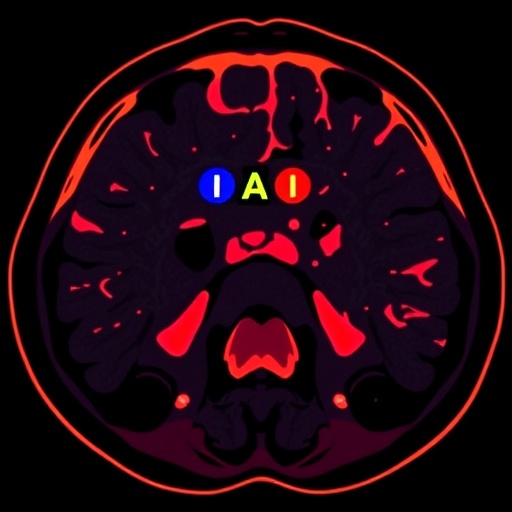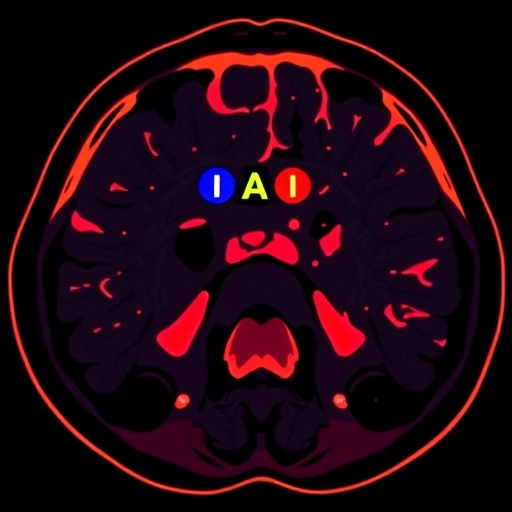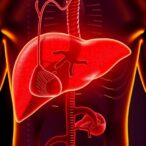
Recent advancements in medical imaging have significantly transformed the landscape of cancer treatment, particularly in hematological malignancies such as Hodgkin Lymphoma. A groundbreaking study led by Jajroudi, Fadafen, and Enferadi delves into an innovative approach that enhances the predictive capabilities regarding treatment responses in patients diagnosed with this type of lymphoma. The authors have explored the integrated use of lesion and extranodal PET/CT radiomics, which could potentially revolutionize how healthcare providers assess the effectiveness of treatment strategies in Hodgkin Lymphoma.
PET/CT scanning has emerged as a cornerstone in oncological imaging, offering detailed insights into both tumor metabolism and anatomical structure. The synchronicity of positron emission tomography (PET) and computed tomography (CT) allows for the simultaneous visualization of metabolic activity and physical characteristics of tumors. However, traditional imaging techniques often fall short in comprehensively evaluating treatment responses. This study addresses such limitations, presenting an integrative methodology that not only focuses on primary lesions but also considers extranodal involvement in the predictive framework.
Radiomics is an emerging field that focuses on extracting a vast array of quantitative features from medical images. By applying advanced computational algorithms, radiomics analyzes the pixel-based data to identify patterns that may correlate with clinical outcomes. This study encapsulates the essence of radiomics by harnessing high-dimensional data from PET/CT scans to generate predictive models for treatment response. Such features can encapsulate tumor heterogeneity, shape, size, and texture, each contributing crucial information about the tumor’s biology and response to therapy.
In their research, the authors highlight the substantial potential of combining lesion and extranodal radiomics features. By analyzing both intra-nodal characteristics and those of adjacent structures, the study provides a holistic perspective that could enhance prediction accuracy. For instance, the presence of extranodal involvement, often indicative of disease progression, is integrated into the overall evaluation process. This is a pivotal shift from focusing solely on the primary lesion, acknowledging that Hodgkin Lymphoma frequently affects areas beyond the primary site, thus influencing treatment dynamics.
Utilizing machine learning algorithms, the researchers have developed sophisticated models that can classify treatment responses based on the extracted radiomic features. This approach allows for the identification of significant biomarkers that may not be visible through conventional imaging analysis. These biomarkers are paramount, as they guide clinical decisions, ensuring that patients receive tailored therapy which is responsive to their unique disease profile.
Moreover, the study emphasizes the importance of a robust dataset for training these predictive models. The authors meticulously curated a diverse cohort of Hodgkin Lymphoma patients, ensuring a representative sample that strengthens the statistical power of their findings. The integration of various demographic and clinical variables provides an additional layer of depth to the analysis, facilitating a comprehensive understanding of how different factors influence treatment outcomes.
Throughout the study, the authors underscore the need for interdisciplinary collaboration between oncologists, radiologists, and data scientists. Such collaborations are foundational in translating complex data sets into actionable clinical insights. The ability to synthesize expertise from various fields will be crucial as the healthcare landscape progresses toward precision medicine, where individual patient characteristics drive treatment paradigms.
Additionally, the implications of this research extend beyond Hodgkin Lymphoma, suggesting a framework that could be applicable to a range of cancers. The methods and findings could be adapted to evaluate treatment responses in other hematological malignancies or solid tumors, thereby expanding the horizon of personalized medicine. As radiomics continues to evolve, its integration into routine clinical practice may soon become a reality, enhancing our ability to deliver targeted therapies.
The authors also draw attention to the challenges associated with implementing radiomic analyses in clinical settings. Issues such as standardization of imaging protocols and the need for comprehensive training for healthcare professionals are noted as potential barriers. However, with the increasing prevalence of digital health technologies and machine learning, solutions to these challenges are rapidly emerging, suggesting that widespread adoption may be achievable in the near future.
In conclusion, the innovative research led by Jajroudi and colleagues marks a significant stride forward in the realm of predictive modeling for treatment responses in Hodgkin Lymphoma. By integrating lesion and extranodal PET/CT radiomics, the study paves the way towards a more personalized approach to cancer treatment, emphasizing the need for ongoing research and collaboration. These advancements not only hold promise for improving patient outcomes but also set a precedent for the broader application of radiomics in oncology.
As the medical community continues to grapple with the complexities of cancer treatment, such progressive research initiatives are essential. The evolution of technology and the integration of comprehensive imaging data will undoubtedly play a crucial role in redefining strategies for combatting malignancies effectively.
This revolutionary study illustrates the growing intersection of technology and healthcare, underscoring the importance of innovation in enhancing our understanding of treatment responses. What once seemed like a distant goal is fast becoming a tangible reality, with the potential to change the face of oncology forever.
Subject of Research: Integrated Lesion and Extranodal PET/CT Radiomics for Predicting Treatment Response in Hodgkin Lymphoma
Article Title: Integrated Lesion and Extranodal PET/CT Radiomics for Predicting Treatment Response in Hodgkin Lymphoma
Article References:
Jajroudi, M., Fadafen, S.A.N., Enferadi, M. et al. Integrated Lesion and Extranodal PET/CT Radiomics for Predicting Treatment Response in Hodgkin Lymphoma.
J. Med. Biol. Eng. (2025). https://doi.org/10.1007/s40846-025-00971-2
Image Credits: AI Generated
DOI:
Keywords:
Tags: advanced oncological imaging methodscancer treatment effectiveness evaluationcomputational algorithms in radiomicsextranodal involvement in lymphomahematological malignancies imagingHodgkin Lymphoma treatment responseinnovations in lymphoma diagnosticsintegrated PET CT analysisPET CT radiomics in cancerpredictive imaging techniques for lymphomaquantitative features in medical imagingtumor metabolism assessment



